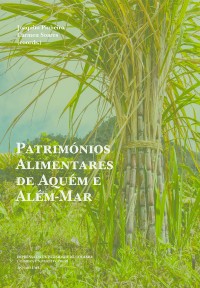Please use this identifier to cite or link to this item:
https://hdl.handle.net/10316.2/39654| Title: | O corpo e a mesa: códigos de sociabilidade | Other Titles: | The body and the table: codes of sociability | Authors: | Castro, Inês de Ornellas e | Keywords: | Food;banquet;dinner;sociability;body;ritual;Rome;Alimentação;banquete;jantar;sociabilidade;corpo;ritual;Roma | Issue Date: | 2016 | Publisher: | Imprensa da Universidade de Coimbra Annablume |
Journal: | http://hdl.handle.net/10316.2/39609 | Abstract: | Drawing on literary and iconographic sources, it is our aim to understand the way the main daily meal in Ancient Rome, the cena, and the banquet, conuiuium, showed a decline in good manners, from the perspective of the relation between the body and the table, in a delimited chronology from the end of the Republican period until the first centuries of the principate. Considering that rules of table manners constitute a guideline for the interaction of the body with society, we shall start by analyzing, though very briefly, the spatial characteristics in which elite meals used to take place. The evolution of the body posture of the adult citizen, and even, as we shall see, that of the feminine body, reflect a sociocultural ambience. Even when society intends to transpose part of the urbanitas into the domestic space, it is frequently jeopardized by the lack of ciuilitas or an attraction for transgression. In fact, the exercise of conviviality experienced in the triclinuim provides guests of both sexes with a license sanctioned by otium when enjoying sensorial pleasures, which comprise not only the palate but can also expose the body to erotic seduction.
Finally, it is intended to interpret rules of table manners as a code, essentially
of aesthetic and ethical kind, able to govern the limits of greed and the body in a
convivial private space. A partir de fontes literárias e iconográficas, interessa-nos entender de que modo o principal repasto da Roma antiga, a cena, e o festim, conuiuium, declinam as boas maneiras, na perspectiva da relação entre o corpo e a mesa, numa cronologia delimitada entre o final do período republicano e os primeiros séculos do Principado. Considerando que qualquer protocolo da mesa constitui um guião para o corpo interagir em sociedade, principiaremos por analisar, ainda que de modo muito breve, as características do espaço onde decorre o repasto. A evolução da postura do corpo do cidadão adulto, e mesmo, como veremos, do corpo feminino, reflectem uma ambiência sócio-cultural que, embora transporte para o espaço doméstico parte da urbanitas da vida cívica, é frequentemente ameaçada pela falta de ciuilitas ou mesmo pela transgressão. Com efeito, o exercício da convivialidade das elites experienciado no triclínio proporciona aos comensais de ambos os sexos uma licença sancionada pelo otium para fruir prazeres sensoriais, que não só abrangem o palato como podem expor o corpo à sedução erótica. Finalmente, pretende-se interpretar o protocolo da mesa como um código, essencialmente estético e ético, capaz de reger os limites da gula e do corpo num espaço de partilha privado. |
URI: | https://hdl.handle.net/10316.2/39654 | ISBN: | 978-989-26-1190-7 978-989-26-1191-4 (PDF) |
DOI: | 10.14195/978-989-26-1191-4_25 | Rights: | open access |
| Appears in Collections: | Patrimónios alimentares de aquém e além-mar |
Files in This Item:
| File | Description | Size | Format | |
|---|---|---|---|---|
| o_corpo_e_a_mesa.pdf | 7.37 MB | Adobe PDF |  |
Items in DSpace are protected by copyright, with all rights reserved, unless otherwise indicated.
